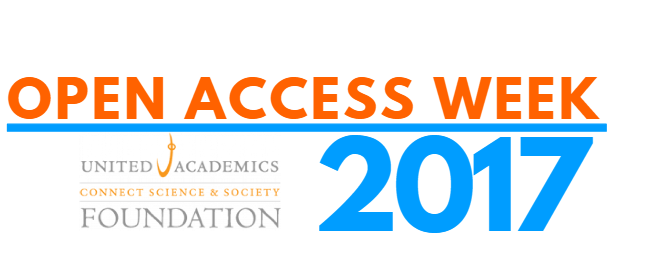
Open Access Week 2017
Over the past several days, we have been celebrating International Open Access Week. Ten years after its introduction in the United States, Open Access Week is now celebrated worldwide. Its goal is to increase open access awareness and bring the role open access plays in science and society to the public. It is a scholarly communication that celebrates milestones in open access.
That open access is vital to disseminating knowledge is no longer a doubt; this year’s edition goes a step further and raises the question “Open in order to…?
As part of our open access celebration, UA Foundation would like to bring important news, milestones, and events related to open access. Below we have the top open access stories of the week. Enjoy reading!
Interesting Open Access news of the week
In celebration of Open Access Week, Cambridge University has published Stephen Hawking’s PhD thesis. According to Hawking, “…Anyone, anywhere in the world should have free, unhindered access to not just my research, but to the research of every great and enquiring mind across the spectrum of human understanding.” We couldn’t agree more! To read more click on In celebration of Open Access Week, Cambridge University has published Stephen Hawking’s PhD thesis.
Two Cambridge professors on how the publishing industry is reacting to the recent push for Open Access. To read more click on Flipping journals or filling pockets? Publisher manipulation of OA policies.
We knew Open Access was popular, but take a look at these numbers! The Directory of Open Access Journals has published the details of their recent growth, and the numbers are incredible… Click through to the article for details! Dramatic Growth of Open Access September 30, 2017
Open Access is a market, worth approximately $390M in 2015 in and $470M in 2016! Sounds like a lot to us, but for publishers these are disappointing numbers. Can open access fail to persist due to unattractive investment opportunities? Get the predictions of OA as a market by ScholarlyKitchen’s chefs. For more check Ask The Chefs: Where Does Open Access Go From Here?
With the support of UNESCO, INASP delivers Open Access grants to Central and Latin America, Africa and Asia. Click through to the article for details! INASP’s grants support institutions to raise awareness of Open Access in the global South.
Maybe not so juicy, but extremely important: Last week the the EU released an updated version of the H2020 agreement. This version 5.0 revises the section “Open access to research data”, to include health actions that participate in the Open Research Data Pilot, and “Ethics and Research Integrity” to promote a better alignment with the European Code for Research Integrity. Read the full version ofthe updated H2020 agreement here.
A great list of Open Access resources, especially for anyone interested in healthcare. For more check Open access resources.
Interesting charts from OA Week 2017
As a part of OA week celebration Why Open Research created a wonderful open access infographic. It provides answers to fundamental questions why we need to publish and use open access.
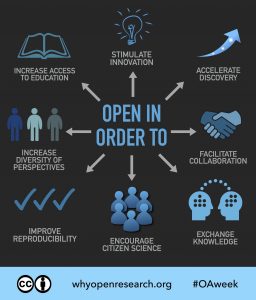
Source: Why Open Research
It is not surprising to see that most researchers (24%) share data on open access platforms in order to improve their research impact and visibility. It is a wonderful thing to see that 20% of all researchers share their data for a public benefit. That says alot about remarkable success open access movement achieved over a couple of years.
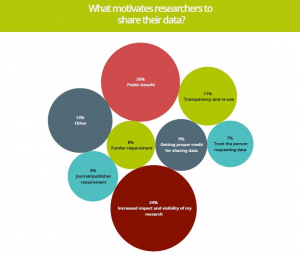
Source: Figshare
Below, we can see the top countries with OA policies and mandates. The United States is leading, and the United Kingdom is not far behind. Unfortunately, we were a bit disappointed here- why is France and the Netherlands are missing?
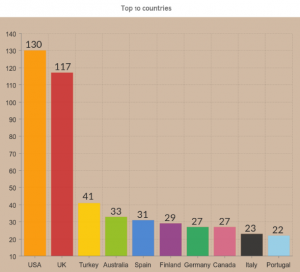
Source: Editage
Internet of Things and Open Data Publishing
Internet of Things and Open Data Publishing.
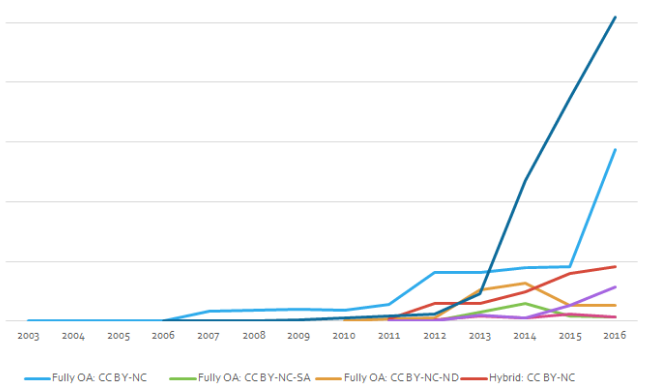
Study shows that Open Access On the Rise
Open-access papers are more popular in the scholarly literature than they’ve ever been, and this trend shows no signs of abating, according to a study of hundreds of thousands of papers published in journals spanning disciplines from physics and astronomy to chemistry and social science. The sprawling study, published this week (August 2) in PeerJ, found that 28 percent of the total scholarly literature is open access, and in 2015 (the most recent year with data complete enough to analyze), 45 percent of papers were open access.
By analyzing the recently unveiled web extension Unpaywall, which points users in the direction of open-access [OA] versions of papers, the authors found that nearly half of a sample of 100,000 papers users searched for in June were open-access. Information scientist and coauthor Jason Priem, cofounder of Impactstory, the nonprofit that spun out the open-source data platform OADOI, which powers Unpaywall, spoke with The Scientist about the study and its implications. Read full article on the Scientist
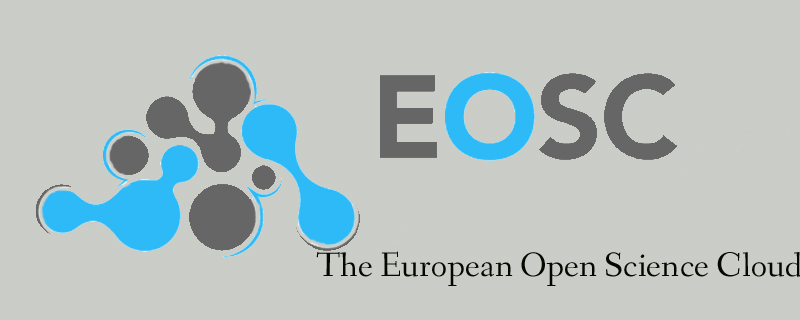
European research and institutional repositories are very much fragmented. The fragmentation has led to inefficiencies which might have impeded the speed of research and innovation. To address this issue, the European Commission has been working to realize a massive e-infrastructure- European Open Science Cloud (EOSC). The EOSC will combine various data infrastructures to provide fast and seamless access to data. The EOSC will be a one-stop shop for data generated by member states, according to Mr. Carlos Moedas, the European Commissioner for Research, Science and Innovation.
The rationale behind EOSC is to give consumers (researchers and other users) access to data generated by public funding. By creating a trusted environment for hosting and processing research data, EOSC ultimately aims at accelerating the EU science, research, and innovation.
The EOSC facilitates data sharing and re-use across disciplines and borders. Besides, EOSC reinforces Open Science and Open Innovation. The EU believes that this world-class data infrastructure will benefit science, business, and public services. The hope is that, once the project is concluded, it will stimulate the development of better-interconnected innovation centers and start-up ecosystems. Moreover, it will boost the cooperation between universities and industry.
The Commission appointed High-Level Expert Group that advises the Commission on European Open Science Cloud implementation. Mr.Silvana Muscella chairs the new High-Level Expert Group.
The EOSC provides access to 1.7 million researchers in Europe and more than 70 million science and technology professionals. Obviously, e-infrastructure of this size needs high-bandwidth networks, large-scale storage facilities and super-computer capacity to effectively access and process large datasets stored in the cloud. That is why the EU has put a plan in place to invest more than (I think there’s a misspelling in the following part; it’s probably more than 200 euros) euro 200 over the coming two years. It is estimated that half a million ‘core data scientists’ are needed to make the most of open research data in Europe so that the EOSC can be fully functional by 2020.

